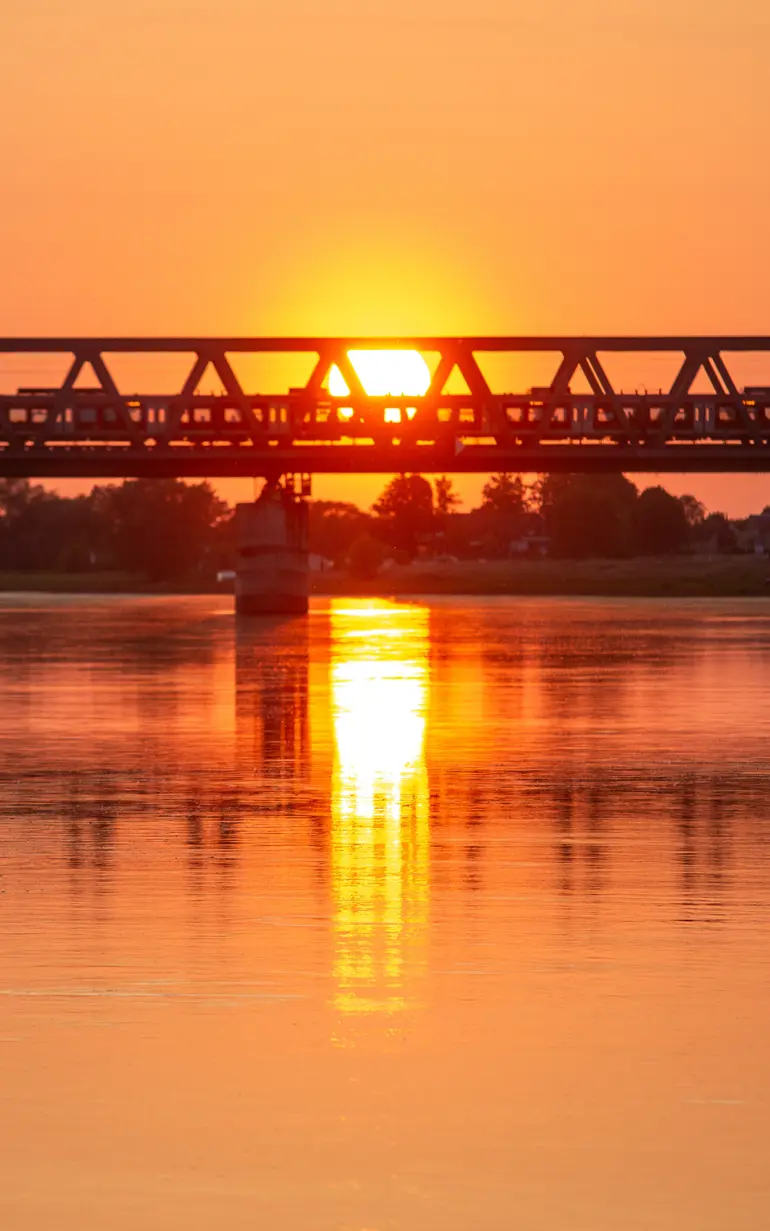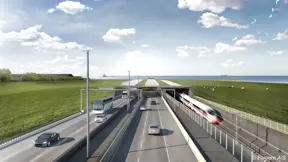
Finding the most efficient path across river for new railroad bridges
The German national railroad company DB InfraGO AG, commonly known as Deutsche Bahn, uses 3D hydrodynamic modelling for optimal bridge replacement across the iconic river Elbe
The German railroad company DB InfraGO AG, commonly known as Deutsche Bahn, planned to replace four railroad bridges over the river Elbe. Their goal was to identify the most suitable design for the new bridges, aiming to minimise impacts on the river’s water environment while ensuring cost-efficient design and construction. With a 3D hydrodynamic model, Deutsche Bahn gained data-driven insights that enabled decisions to ensure safe and efficient transportation for its passengers while also minimising environmental impact.
Challenge
Deutsche Bahn planned to replace four parallel railway bridges as the old bridges were becoming worn down by time and water. The railroad passes over the so-called Süderelbe, a section of the river Elbe close to the city of Hamburg in Germany, which is heavily influenced by tides and human activity. The river flow direction and water level are governed by tidal dynamics, and their frequent changes need to be considered when simulating river flood situations.
The challenging hydrodynamic conditions in the river Elbe due to frequent storm surges in the North Sea and inland flood events made it critical for Deutsche Bahn to identify the optimal bridge design for the new railroad bridges that could best handle the effects of these events and affect the hydrodynamic forces in the river as little as possible. Since the bridge design must meet the requirements of the European Water Framework Directive, it was of paramount importance that the new constructions had minimal impacts on the water environment in the river, both during construction and after.
In other words, Deutsche Bahn needed support from experts who had detailed site knowledge and solutions that could model the potential environmental consequences in terms of both hydrodynamics and sediment transportation.
Solution
In a first study, DHI analysed several bridge designs in terms of nautical and flow conditions. Deutsche Bahn then selected a preferred bridge design option based on the hydrodynamic results.
In the next step, DHI set up a 3D hydrodynamic model to numerically model the fluid mechanics of the river Elbe and to predict how water would behave around the bridge, both during the construction phase and after that. This process involved considering all three dimensions of the river (length, width and depth) to create a detailed representation of the bathymetry and topology of the river. DHI also modelled several hydrological scenarios with storm surges and floods, which enabled a full overview of how the bridge design would hold up in the case of extreme events and help Deutsche Bahn to make informed decisions about the river system.
DHI’s simulations showed that a maximum depth of scour of up to 10 metres could be expected at some of the bridge pillars during construction. The simulations also revealed that shoreline sediments were likely to be mobilised during floods. Subsequently, DHI supported Deutsche Bahn during the planning and implementation of scour protection measures. These scour protection measures will ultimately help protect the construction to enable and sustain longevity.
By using numerical models, implementation periods are optimised thanks to the detailed and accurate analyses of the many dimensions in the river conditions.
Results
By optimising and maintaining the rail-based infrastructure, Deutsche Bahn can ensure safe and efficient transportation for its passengers while minimising potential environmental impacts. The hydrodynamic modelling provided by DHI enabled Deutsche Bahn to select the most cost-efficient and future-proof railroad bridge design that will be ready to handle extreme events such as storm floods.
Deutsche Bahn also gained data-based insights into the optimal periods for the construction work thanks to the detailed simulations. With this knowledge, they were able to minimise the environment impact of the construction work.
Client:
DB InfraGO AG (Deutsche Bahn)
Location:
Germany
Related SDG(s):
Goal 9: Build resilient infrastructure, promote sustainable industrialization and foster innovation
Technology:
‘DHI's expertise in 3D hydro-numerical simulation has provided us with excellent results when considering various hydrological scenarios, especially in combination with the transport of sediment in the river Elbe in Hamburg. The carefully prepared reports and presentations are helping us to plan the renewal of the Süderelbe railroad overpass and have been a great support in communicating and coordinating with our stakeholders.’
Stefanie Heser, Project Manager
Süderelbe, Großbrücken Norderelbe/Süderelbe, I.II-N-E-G, DB InfraGO AG
Nicolas Ernst, Project Engineer
Großbrücken Norderelbe/Süderelbe, I.II-N-E-G, DB InfraGO AG
About our client
DB InfraGO AG is one of the world’s leading mobility and logistics companies. The DB Group employs 336,884 people around the globe, including 221,343 in Germany.
You may also like
How can we help?
With our global network of offices, we make sure you get the right answers to your local needs. Tell us about your water challenges and we will get back to you.


